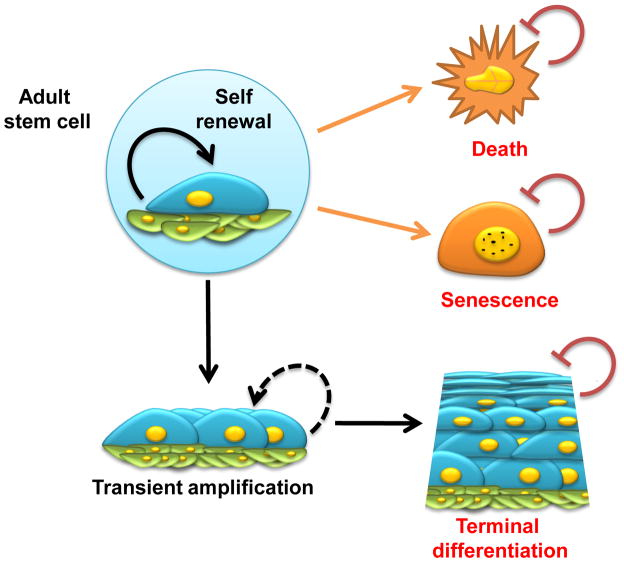Figure 1. Stem cell fate.
An exquisite balance between microenvironmental cues from the niche and cell autonomous signals is required to preserve the self-renewal and tissue regenerative capacity of stem cells. Under physiological situations, epithelial stem cells undergo asymmetric cell division, thus self-renewing within their niche and generating daughter cells that proliferate rapidly, in a process known as transient amplification, followed by terminal differentiation. Environmental and intrinsic processes, including oncogenic stress, can cause stem cells to undergo cell death or senescence. The activation of cell differentiation, death or senescence programs -- DDS response -- results in the loss of proliferative potential of adult stem cells. The demise of stem cells by DDS activation may represent a natural protective barrier, preventing the incorporation of genetic and epigenetic alterations into self-renewing multipotent cells, and thus its devastating consequences, including tumor formation. On the other hand, stem cell depletion resulting from the activation of the DDS response may contribute to reduced tissue regenerative capacity and accelerated aging.

